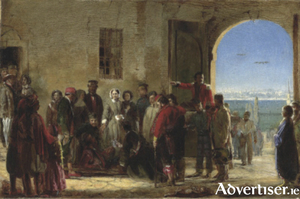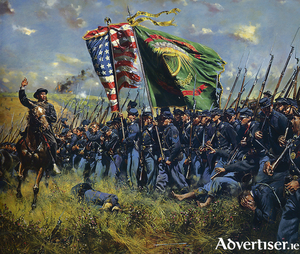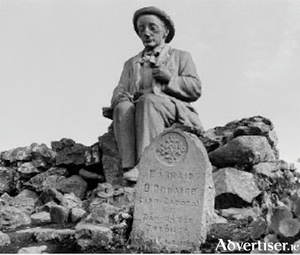Search Results for 'Irish Regiment'
5 results found.
Rats ate the nuns’ Christmas dinner

In the hopelessly disorganised Allied army which fought Russia in the Crimean War 1853 - 1856, 15 Sisters of Mercy from Ireland played an heroic role in establishing revolutionary nursing practices in the chaos of the terrible hospitals of the day. They undoubtedly saved hundreds of lives, and brought comfort to the young injured and dying men, and laid out principals for modern nursing which were widely regarded as the standard for decades to come.
Rats ate the nuns’ Christmas dinner Week IV

In the hopelessly disorganised Allied army which fought Russia in the Crimean War 1853 - 1856, 15 Sisters of Mercy from Ireland played an heroic role in establishing revolutionary nursing practices in the chaos of the terrible hospitals of the day. They undoubtedly saved hundreds of lives, and brought comfort to the young injured and dying men, and laid out principals for modern nursing which were widely regarded as the standard for decades to come.
The American Civil War helped the Irish find acceptence

When Charles Dickens first visited the United States in January 1842, the popularity of his books was such that he was mobbed by adoring crowds, feted and dined as the major celebrity that he undoubtedly was, and was guest of honour at a famous Valentine’s Ball in New York attended by 3,000 of the city’s great and good.
June 6 – The day democracy returned to Europe

The battle for Normandy June-August 1944, launched on D-Day exactly 75 years ago, marked, after Stalingrad, the beginning of the end of Nazi Germany. It was a major battle. The Allies suffered 209,672 casualties of whom 36,796 were killed. Some 28,000 Allied airman were lost in the months preceding and during the campaign.
‘I am an international socialist,’ shouted Pádraic Ó Conaire

In his famous statue of the writer and Irish scholar Pádraic Ó Conaire, the sculpture Albert Power presents a brilliant likeness to the man Galway knew as he went about the town. Liam Ó Briain, a friend and fellow Irish enthusiast, remarked that Albert Power had captured exactly how the man looked. Meeting Ó Conaire in town one evening, Ó Briain remembered that he looked in reality as he is on the statue: ‘the stick in his right hand, the little hat on his head’, a face that could show his ‘puckish humour.’ *

